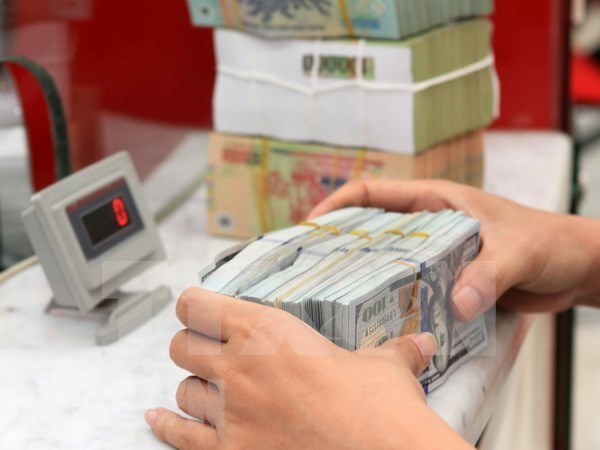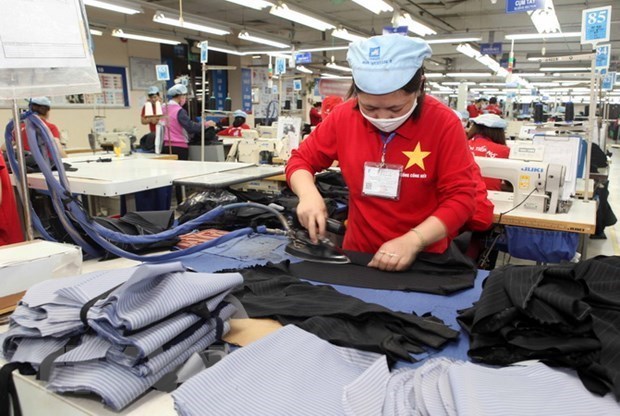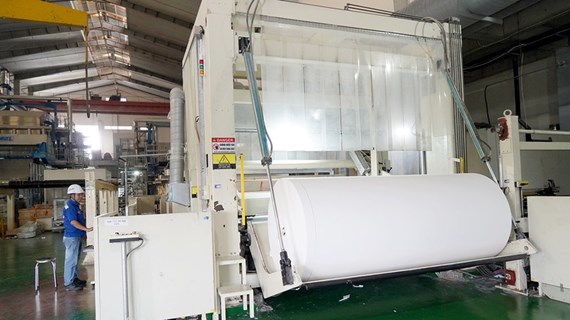Global exchange rate fluctuations impact Vietnamese economy
 Illustrative image (Source: VNA)
Illustrative image (Source: VNA)Hanoi (VNA) - According to experts, the weak local currency pulls up inflation in the EU, which requires Vietnamese businesses to focus on increasing the competitiveness of export goods, creating a valuable difference for their products.
At the end of July, the US Federal Reserve (Fed) announced a continuation to raising interest rates by 0.75 percent, to 2.25-2.5 percent, the highest level since December 2018. This is also the fastest rate adjusted by the Fed in many years. It is estimated that the USD has appreciated by nearly 11 percent since the beginning of the year.
According to the State Bank of Vietnam (SBV), the VND has only depreciated about 2.3 percent against the USD. The USD/VND exchange rate on August 12, as announced by the SBV, was 23,153 VND. The dong remains one of the least depreciated currencies in the Asia-Pacific region.
However, experts said that the appreciation of the US dollar still has a significant impact on businesses and the Vietnamese economy. These pressures include those on things like imported goods, inflation levels, and exchange rates.
Exchange rate fluctuations since the beginning of the year impact Vietnam's trade activities. If exporters benefit when the dollar appreciates, in the opposite direction, importers have to pay an additional cost to offset the difference due to this fluctuation.
Based on the selling exchange rate of the SBV, from the beginning of the year to August 1, one USD equals 23,400 VND, up 2.3 percent compared to the beginning of 2022. In the opposite direction, the Vietnamese dong increases in value by about 8 percent against EUR.
The US and Europe (EU) are two important import-export markets of Vietnam, so exchange rate fluctuations, especially the US dollar, have had a strong impact on the production and business results of many businesses.
Mr. Tran Van Truong, Director of Royal Seafood International Trading Company, said that most of the imported seafood products saw a higher price than the same period last year due to the increase in the USD and the doubling of transportation costs.
The price of imported seafood products has increased over the same period last year. People are increasingly tightening their spending, making it more difficult for businesses and their bottom lines.
According to the Ministry of Industry and Trade, in the past seven months, Vietnam's export turnover has reached 216.35 billion USD and increased by 16.1 percent over the same period last year. Meanwhile, the whole country spent about 215.59 billion USD to import goods for domestic production and consumption.
In addition to the main markets such as China, ASEAN, and Japan, in the seven months, Vietnam has also seen strong imports from the US and EU, of which the EU reached 9 billion USD and the US reached 8.8 billion USD.
 Garment for export at Garment 10 Company (Photo: Tran Viet/VNA)
Garment for export at Garment 10 Company (Photo: Tran Viet/VNA)Talking about the impact of the depreciating EUR, Mr. Pham Van Viet, Vice Chairman of Ho Chi Minh City Association of Garments, Textiles, Embroidery and Knitting, said the falling EUR affects many textile and garment exporters to Europe.
Accordingly, all customers in Europe pay in Euro, and Vietnamese businesses that receive money back home must change it to US dollars. Therefore, the fact that the Euro falling almost equal to the USD means that the export value of each shipment decreases accordingly. Meanwhile, profits fall as they are affected by input costs such as gasoline, raw material prices, and labor costs that have all increased.
According to experts, the weak domestic currency pulls up inflation in the EU, and imported goods become more expensive. Moreover, weak purchasing power makes EU consumers limit spending, especially on non-essential goods. This can reduce the demand for imported goods from markets, including Vietnam.
Therefore, Vietnamese enterprises need to focus on increasing the competitiveness of exported goods, creating a niche of demand for their products. In particular, for importing companies, maximizing domestic resources, finding alternative partners from the country, and gradually reducing dependence on an import market will help reduce costs and mitigate risks when the world market fluctuates.
In addition, when signing commercial contracts with partners, enterprises should negotiate the application of a ceiling or floor of foreign currency for payment. This spreads the risk among both parties, not just the Vietnamese partner./.













